In order to send outbound messages using WhatsApp API, such as a broadcast or even a cart recovery message, you first need to create a message template and get it approved by WhatsApp.
Creating a message template is very straightforward. This guide has 2 formats, there's a video embedded below, followed by a text version.
For those who prefer text and screenshots, read on.
Template Name
Give your message template a recognisable name. This is used for internal purposes only, so the name can be anything.
Template Category
WhatsApp provides a list of template categories that you have to choose from. You want to pick a category that best describes the kind of template you are creating.
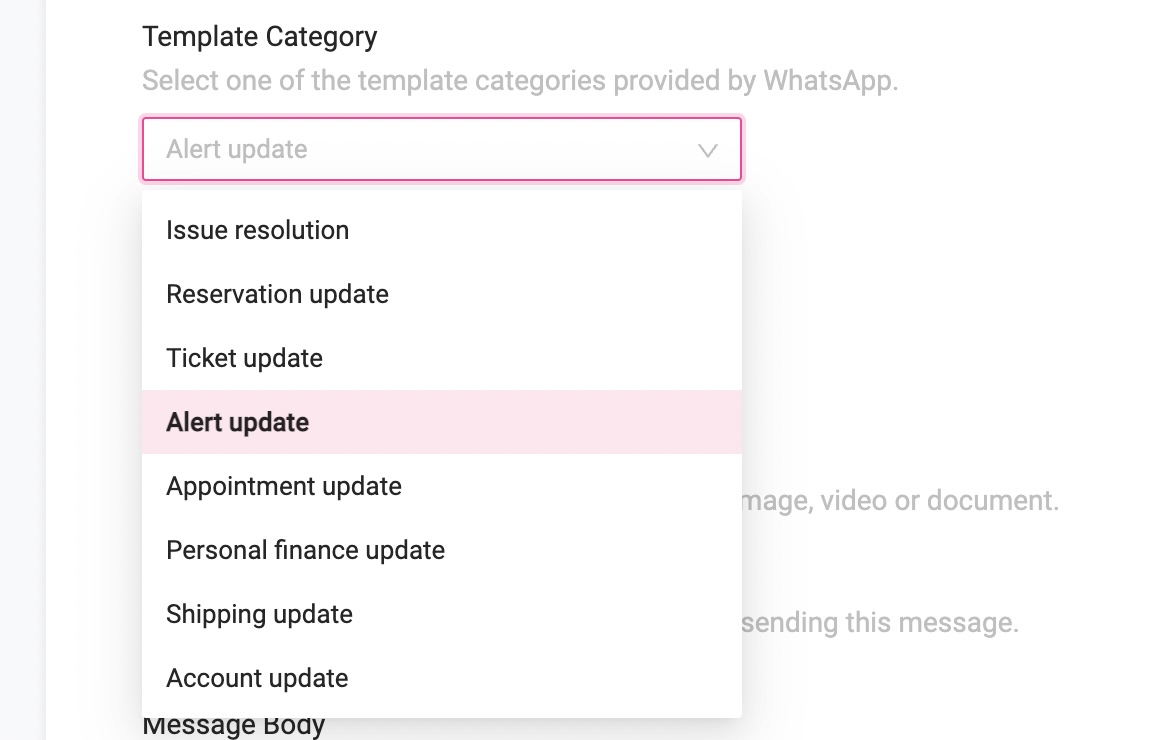
For example, if you're creating a promotional message template, perhaps use "Alert update" category.
For an abandoned cart message template, try "Payment update" category.
For sending an order tracking or delivery related notification, try the "Shipping update" category.
Template Language
Pretty straightforward here. Just pick the language of your message template. In case you're not sure to pick English (US) or English (UK), just pick the first English option.
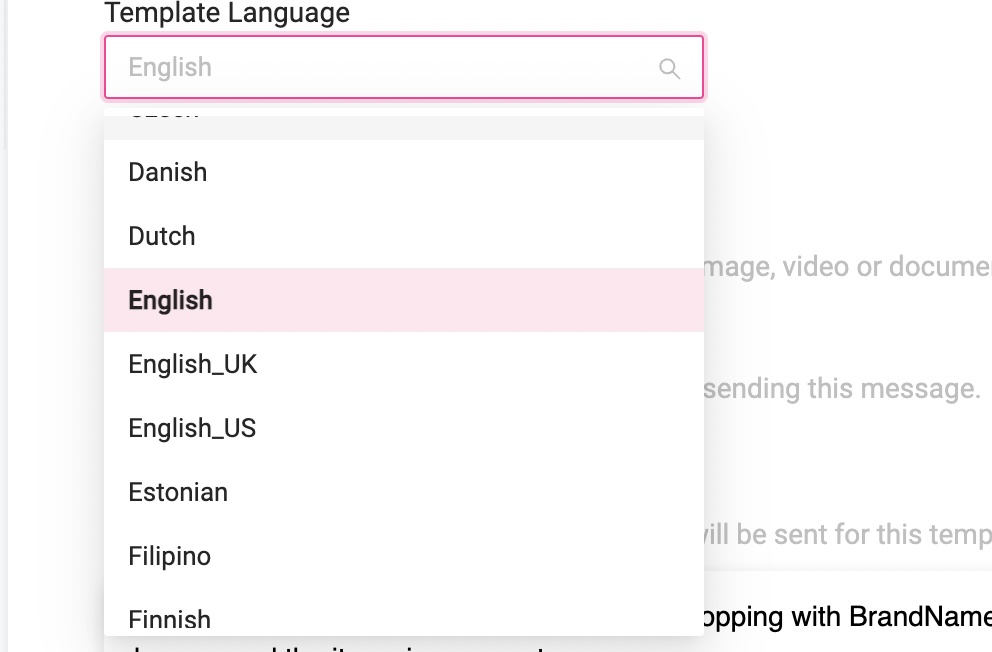
Template Content
This is the section where you'll spend most of your time while crafting a new message template.
There are 3 sections to Template Content:
- Header (optional)
- Body
- Buttons (optional)
Header
As you can see in the app UI, a header is optional.
If you want your outbound WhatsApp message to include an image, video or a document (such as a PDF), then select the corresponding Header option.
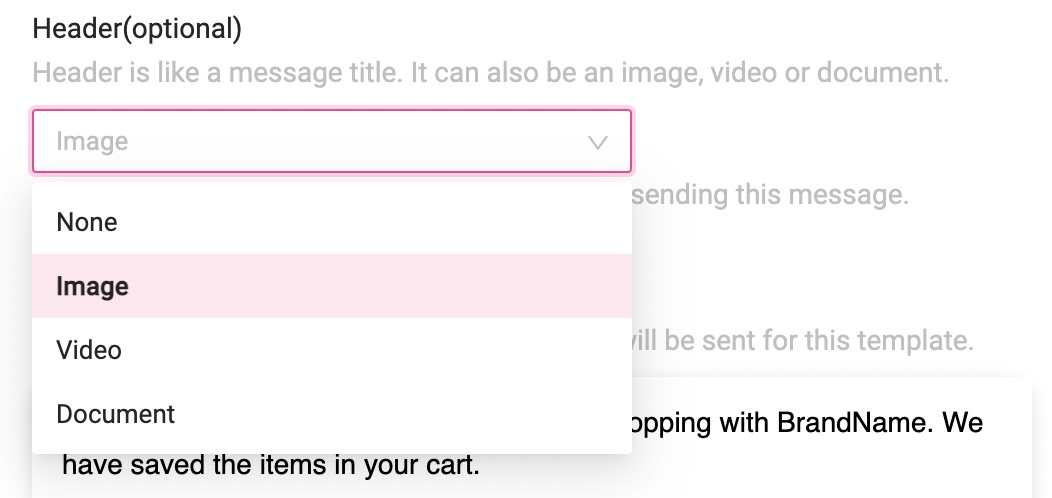
Please note: You do not have to upload the image / video / document at the time of creating the template. The specific header image, etc. has to be uploaded while configuring your Automation or Broadcast campaign.
Message Body
The main part of a WhatsApp message template, this section is not optional.
Crafting a message body requires some information:
Variables:
When writing the template, wherever you intend to use dynamic content such as {CustomerName} or such, write a variable such as {{1}}, {{2}} and so on.
This is the format in which WhatsApp accepts a message template.
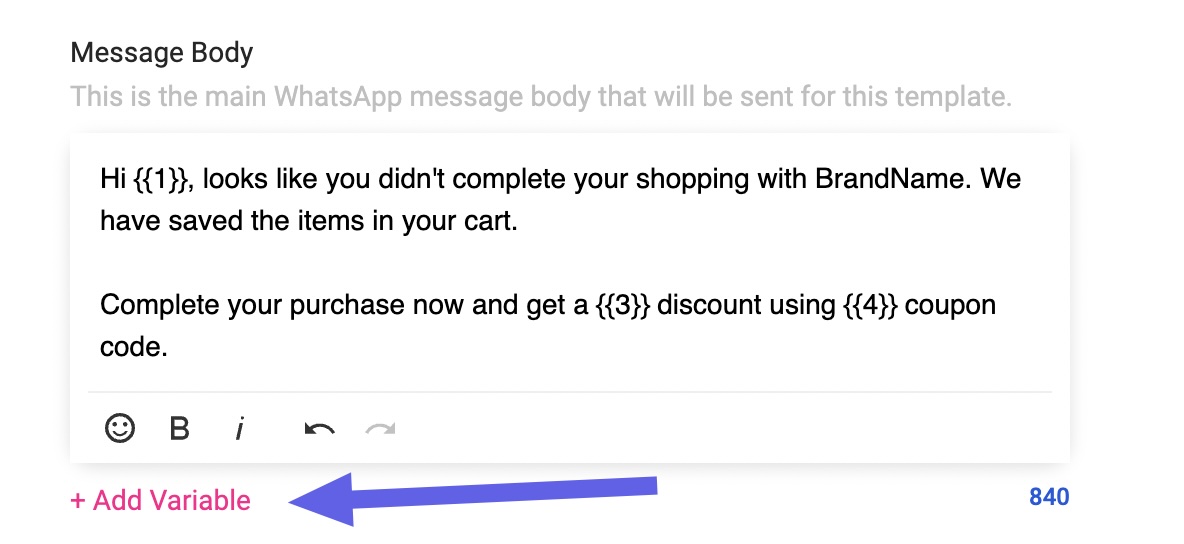
Available variables:
You also need to know what are all the variables available for use.
You can see a list of all variables in this help article, which is always easily accessible from the message template creation page.
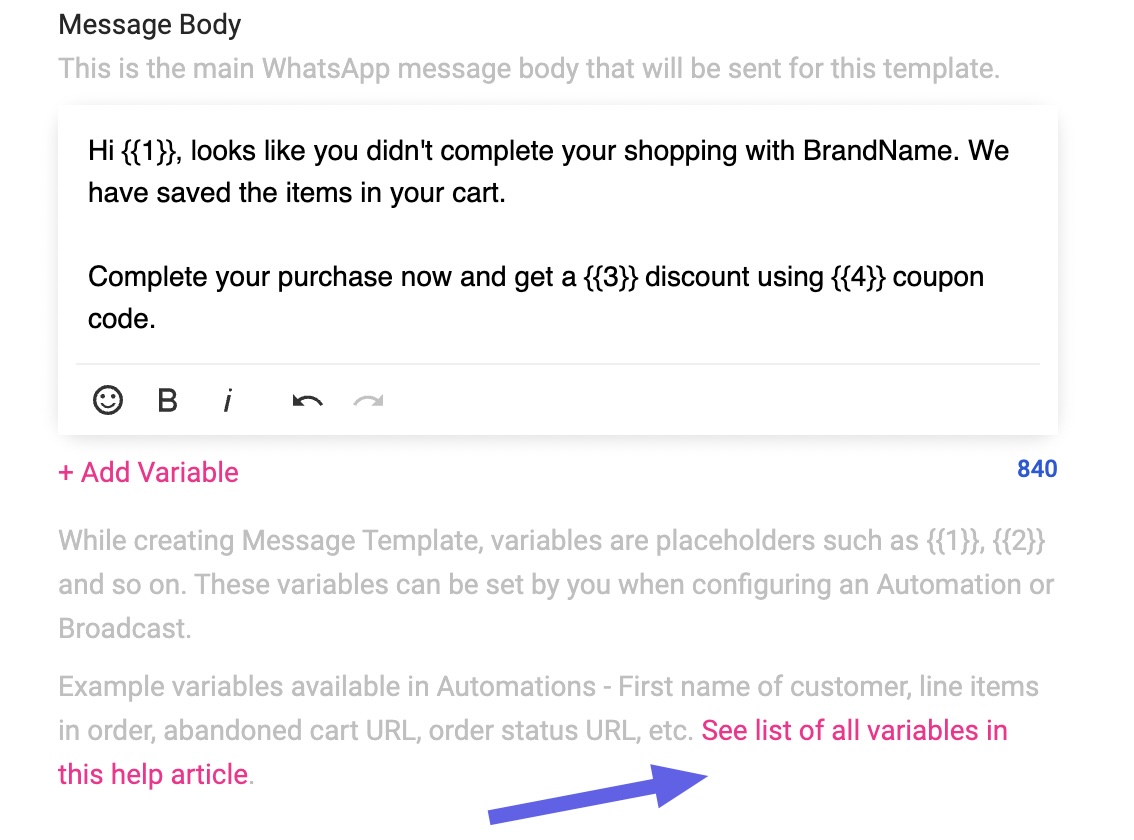
You can also browse the individual Automations to see which variables are available for each of them.
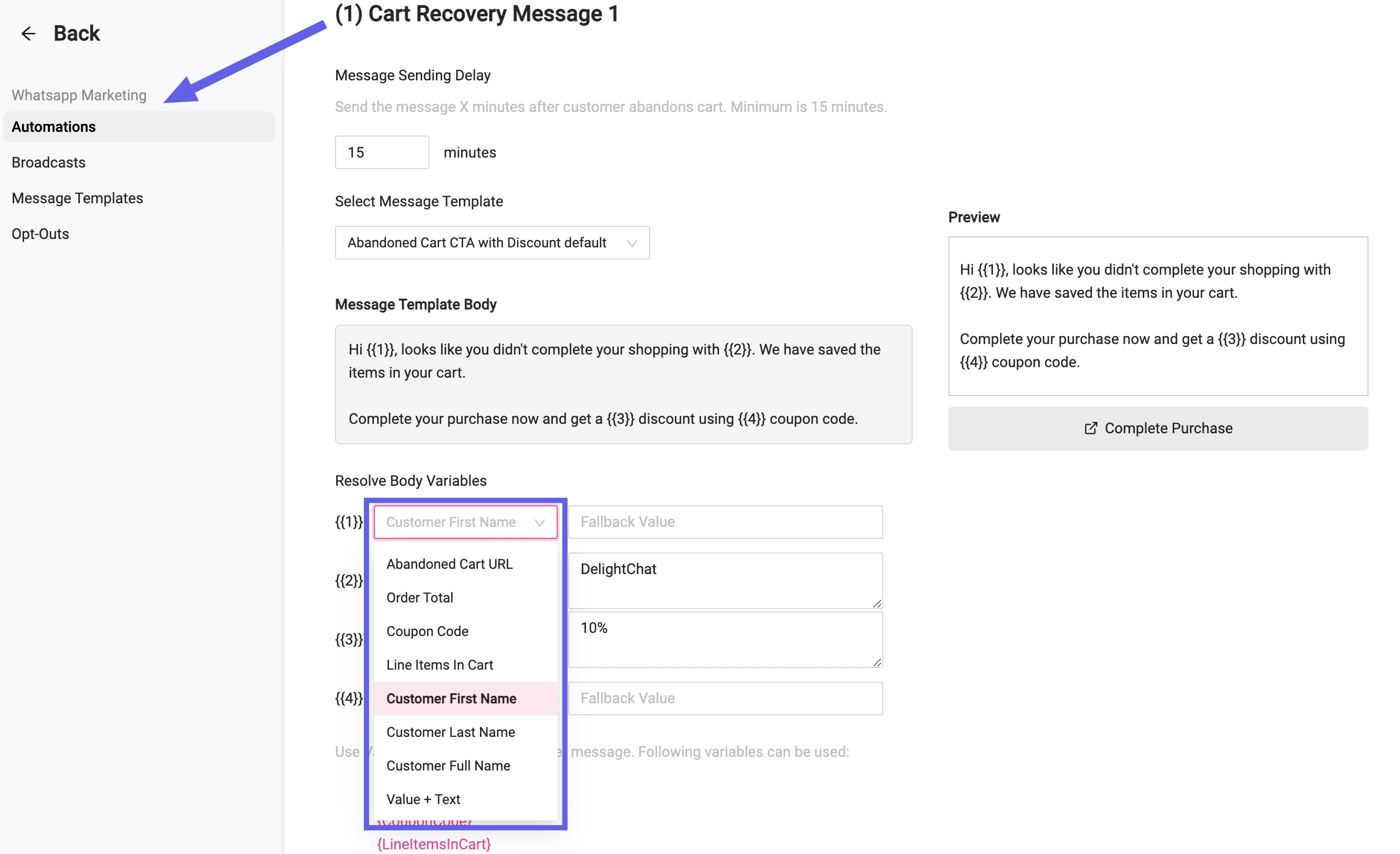
In the case of Broadcasts, the variables available for use are the columns in your uploaded CSV file.
Buttons
Also optional, Buttons are very useful as CTAs.
Suppose you want to direct your customers to a specific page on your website, a Visit Website button is ideal for that versus placing the link inside the message body, which doesn't look all that great.
There are 2 types of buttons:
1. Call To Action (CTA)
There's 2 types of CTAs.
- Visit Website - This is used for sending your customers to a website URL. Please note that while setting up this button, you don't have to configure the actual URL during message creation. That has to be configured while you set up the Automation or Broadcast where you use this template.
- Call Phone Number - CTA could also be a phone call.
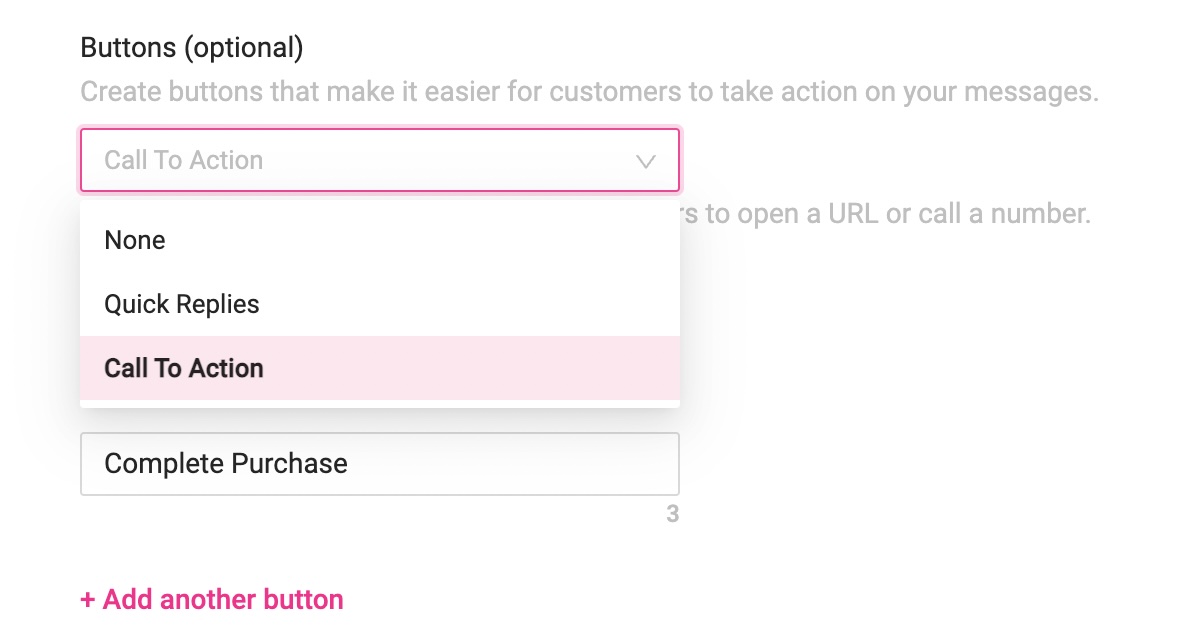
A message template can contain at the most 2 CTA buttons. The possible combinations are:
- 1 Visit Website CTA. You cannot have 2 Visit Website CTAs in one template.
- 1 Call Phone Number CTA. Same limitation as above.
- 1 Visit Website + 1 Call Phone Number CTA.
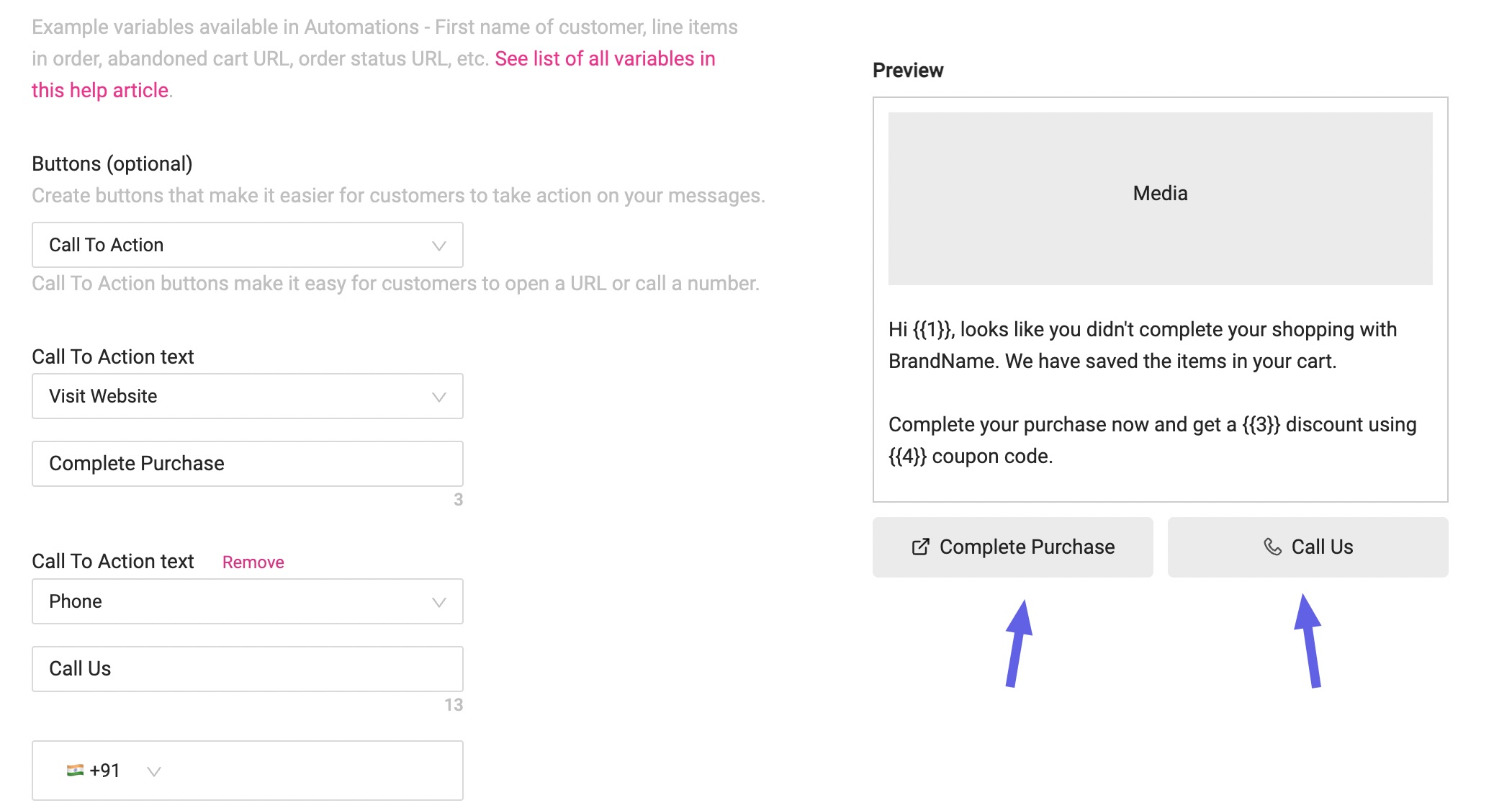
2. Quick Replies
Use Quick Replies if you want your customer to respond to your message, and you want to give them options for responding.
You can add up to 3 quick reply buttons in one message template.

Apply for WhatsApp Message Template
If you've followed all the steps till now, then you probably have a message template that's ready. Go on and hit the Apply button.
The status of the message template gets updated within 1-2 minutes, so you'll know if your template got approved or rejected very quickly.
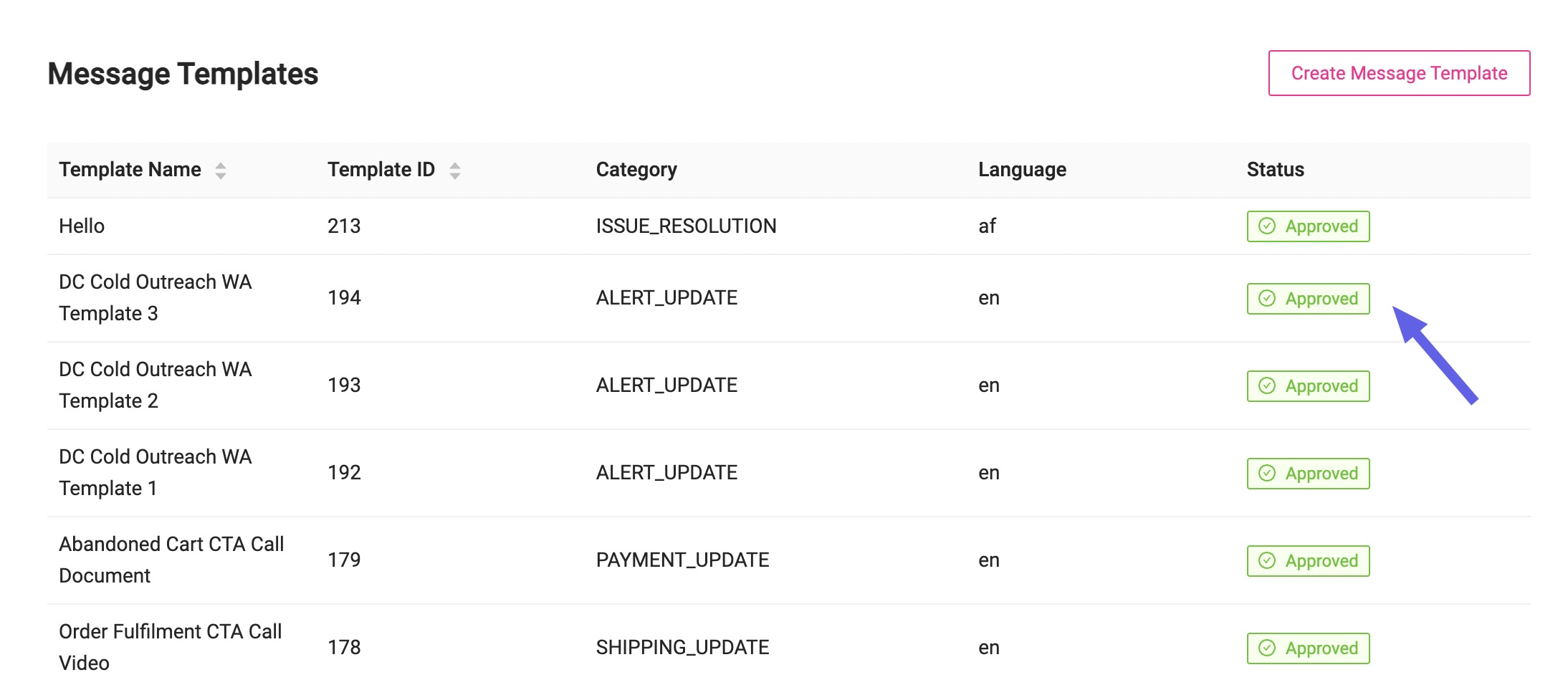
In case you find your applied message template to be stuck in pending state for too long, please contact support and we will help you out.
--
Now that you know how to craft new message templates to use with WhatsApp, you can start using our WhatsApp Marketing features such as Automations or Broadcast.
We've written a few help articles to help you get started easily:

